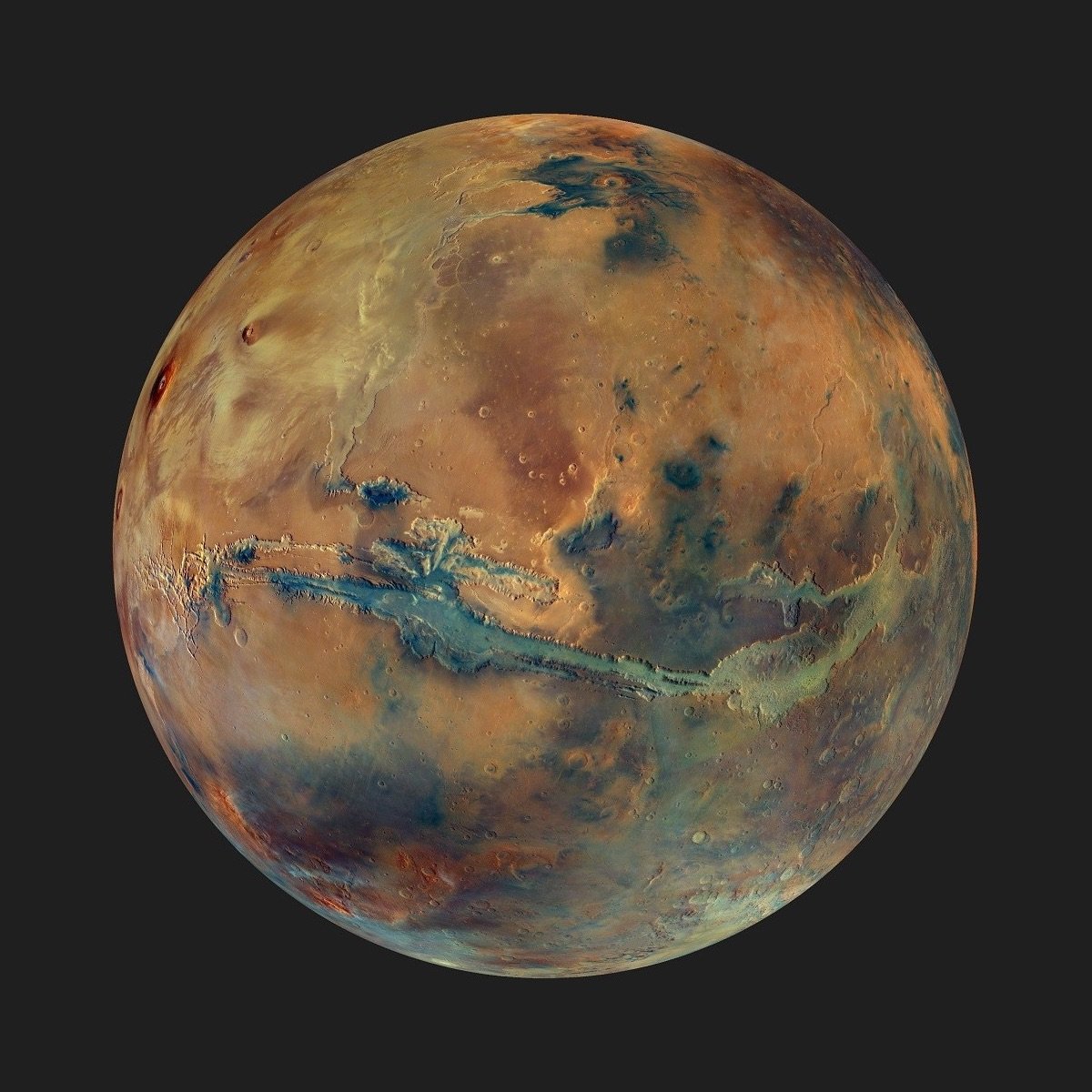Enhanced Color Mars

Using data from the ESA’s Mars Express probe, the German Aerospace Center has released an enhanced color image of Mars that shows off the planet’s geology and mineral content better than the usual dusty red photos do. Here’s part of what you’re seeing:
It is well known that most of Mars is reddish in colour, due to the high amount of oxidised iron in the dust on its surface, earning it the nickname the ‘Red Planet’. But it is also immediately noticeable that a considerable region of Mars is rather dark, appearing bluish in colour in image 1. These regions represent greyish-blackish-bluish sands, which are volcanic in origin and form large, dark sand layers on Mars. They were primarily piled up by the wind to form imposing sand dunes or enormous dune fields on the floor of impact craters. These unweathered sands consist of dark, basaltic minerals, of which volcanic lava on Earth is also composed. Basalt is the most widespread volcanic rock on Earth — and in the Solar System. Earth’s ocean floor is made of basalt, as are the extinct volcanoes of the Eifel, Mount Etna in Sicily and volcanoes of the Hawaiian archipelago.
In my mind, the best bit is how much clearer you can see the various geographical features of the planet. (via bad astronomy)





Stay Connected